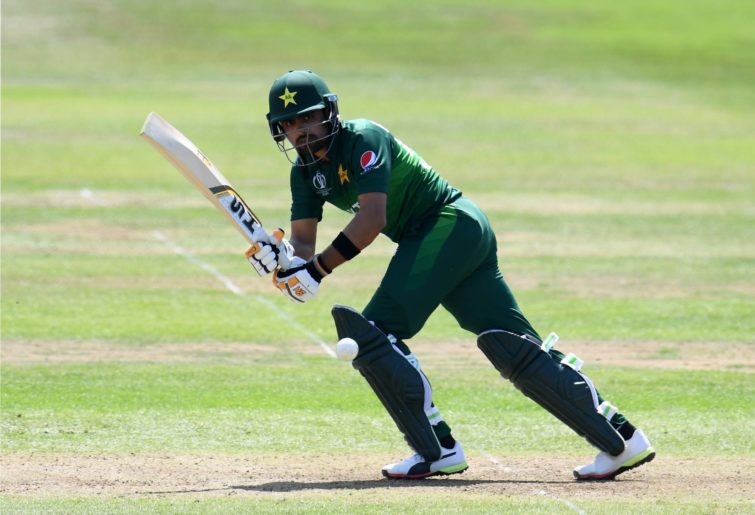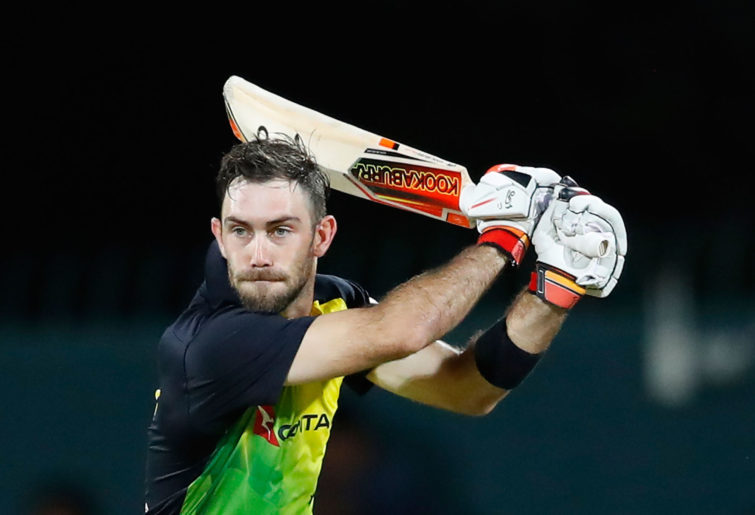Stoinis clubs stunning IPL ton, makes tough chase look a cinch with clutch final-over barrage
Marcus Stoinis produced his first IPL century and it was a beauty. He went 6, 4, 4, 4 to finish off the Lucknow Super…
Opinion
While my Test and ODI world XI teams were decided on performances in international cricket, my T20 world XI encompasses all T20 cricket, reflecting the high standard of franchise cricket around the world.
Like the previous world line-ups, only one player can be selected from any nation, creating some interesting selection dilemmas.
The team includes seven genuine bowling options, and capable hitters batting as low as number eight. Here is the XI.
Babar Azam (Pakistan): 142 T20s, 4861 runs at 43.01, strike rate 125.31, 38 fifties, three centuries
The number one ranked T20 international batsmen, Pakistan’s Babar Azam, opens the batting in this side.
Babar averages a touch over 50 in T20 international cricket, investing in himself to bat for a lengthy period to compensate for his slow strike rate.
The Pakistani opener has 13 fifties in 38 T20 international innings, demonstrating his ability to consistently set a platform at the top of the order.
Before COVID-19 postponed the 2020 PSL finals, Babar made 345 runs at 49.28 for the Karachi Kings.

(Harry Trump-IDI/IDI via Getty Images)
Colin Munro (New Zealand): 262 T20s, 6308 runs at 29.06, strike rate 144.71, 37 fifties, four centuries, 31 wickets at 32.48, economy 9.21
New Zealand’s fast-scoring opener Colin Munro partners Babar Azam. The duo form a nice combination, with one aggressor and one steady hand to bat through.
Munro, the aggressor, has a strike rate of 156.44 in T20 international cricket, and is fourth in the ICC batting rankings for the format.
Having begun his international career in the middle order, the Kiwi has opened the batting in recent years, averaging 36.22 as opener, with a strike rate of 160.66.
Although his part-time bowling is unlikely to be used in this side, Munro provides a useful albeit expensive option with the ball, taking a wicket every 21 balls in his T20 career.
Virat Kohli (captain, India): 281 T20Is, 8900 runs at 41.2, strike rate 134.56, 64 fifties, five centuries
One of the world’s best three-format batsmen, Virat Kohli bats at number three in the T20 world XI.
Kohli has an exceptional record in the game’s shortest format, averaging 50.8 in T20 internationals, and 41.2 in the format overall.
While there are faster scoring options to bat at number three, the Indian captain maintains a solid strike rate above 130, and can anchor the innings by manipulating the field before accelerating later in his innings.
Kohli has five IPL centuries, the second most of all time, and averages 37.84 in the world’s most notable franchise competition.
AB de Villiers (wicketkeeper, South Africa): 310 T20s, 8657 runs at 37.15, strike rate 149.77, 62 fifties, four centuries, 205 catches, 17 stumpings
AB de Villiers is the most versatile batsman in world cricket, capable of batting at any pace, depending on the game’s situation.
The South African crawled to 33 off 220 balls to famously save a Test match in 2012, but also holds the record for the fastest ODI century, taking just 31 balls to reach three figures.
De Villiers can therefore play as an anchor or a hitter, depending on the game situation. The ideal number four, he can consolidate if wickets fall early, but can also swing from ball one should he come in later in the innings.
The South African strikes at almost 150 in T20 cricket, yet still averages 37, reflecting his remarkable ability to score consistently and quickly.
De Villiers keeps wicket in this side, a role that he has performed at times in all three formats.
Glenn Maxwell (Australia): 268 T20s, 5983 runs at 27.57, strike rate 154.4, 33 fifties, three centuries, 95 wickets at 31.14, economy 7.69
Ranked third in the ICC rankings for all-rounders, Glenn Maxwell has a remarkable T20 international record, with a batting average of 35, strike rate of 160, and bowling average of 27.

(Scott Barbour/Getty Images)
Maxwell is a powerful ball striker, and can access the entire ground with his range of unorthodox strokes, making him a brilliant death hitter and the perfect finisher for a tight run chase.
While his IPL output has been inconsistent, Maxwell’s strike rate of 161.13 is bettered by only five players in the history of the tournament. Closer to home, the all-rounder averages 32.6 in the BBL, with a strike rate of 150.28.
The Australian also offers an underrated bowling option, taking ten wickets at 26, and conceding just seven runs per over in the most recent BBL season, when he regularly bowled during the power play.
Andre Russell (West Indies): 321 T20s, 5365 runs at 26.95, strike rate 171.29, 18 fifties, two centuries, 291 wickets at 25.88, economy 8.27
Recently named Wisden’s T20 cricketer of the year, West Indies all-rounder Andre Russell is among the most accomplished power hitters in world cricket.
The West Indies star has the highest IPL strike rate of all time (186.41), and was MVP in the 2019 tournament.
Across the 2019 calendar year, Russell played 46 T20s, averaging 38.57, with a staggering strike rate of 182.12.
While his bowling can be a tad expensive, he isn’t a front-line bowler in this side, meaning he provides a useful wicket-taking option without being required to bowl four overs consistently.
Rashid Khan (Afghanistan): 211 T20s, 879 runs at 12.20, strike rate 149.48, one fifty, 296 wickets at 17.22, economy 6.3
With the top six batsmen doing the majority of the work in T20 cricket, a fast scorer is all that’s required at number seven. Rashid Khan provides the perfect option, striking at 149.48 in T20s.
More significantly, the Afghani spinner is undoubtedly the world’s best T20 bowler, taking his wickets at an incredible average of 17.22, and conceding a tick over a run a ball.
Rashid’s record in T20 internationals is even more remarkable, with the spinner having taken 89 wickets at 12.62.
The Afghani has 55 wickets at 21.69 in the IPL, and has dominated recent BBL seasons for the Adelaide Strikers, with 56 wickets at 17.66 in 40 matches.
Jofra Archer (England): 95 T20s, 419 runs at 16.76, strike rate 139.66, 121 wickets at 22.47, economy 7.80
England’s Jofra Archer is one of the world’s leading white-ball bowlers, with a combination of brutal pace and clever variations making him a fantastic overall package with the ball.
In 27 matches for the Hobart Hurricanes, Archer took 34 wickets at 23.29, to go with his 26 wickets at 23.69 in the IPL.
Having only begun his international career recently, Archer has played just one T20 international, taking 2-29 against Pakistan.
While the English quick is yet to showcase his batting ability in an international match, Archer is a capable ball-striker, scoring at a strike rate of 139.66 in T20s.
Lasith Malinga (Sri Lanka): 295 T20s, 390 wickets at 19.69, economy 7.08
Taking his wickets at an average under 20, Lasith Malinga will long be regarded as one of the great T20 bowlers.

(Michael Bradley/AFP/Getty Images)
Utilising his famous round-arm action, Malinga is one of the best yorker bowlers in the world, proving difficult to score off during the death overs.
The Sri Lankan seamer’s 170 IPL wickets are the most in the tournament’s history, while his bowling average of 19.8 is bettered by just five men, all of whom have played considerably fewer matches.
He may be 36 years of age, but the Sri Lankan veteran remains a dangerous bowler, taking 14 wickets at 17.92 in T20 internationals last year.
Sandeep Lamichhane (Nepal): 77 T20s, 105 wickets at 18.21, economy 6.92
Nepalese youngster Sandeep Lamichhane takes the second spin-bowling position in this side, having performed with distinction in his T20 career so far.
While his T20 international record of 34 wickets at 14.55 has mainly been compiled against associate nations, Lamichhane has demonstrated his quality against stronger opponents in franchise T20 cricket.
The Nepalese mystery spinner has spent the last two BBL seasons with the Melbourne Stars, taking 26 wickets at 20.38.
He has also played in the IPL, the first Nepalese player to do so, taking 13 wickets in nine matches for the Delhi Capitals.
Incredibly difficult to pick, Lamichhane and Rashid Khan would form a deadly combination for this team, taking wickets through the middle overs to halt the opposition’s momentum.
Mustafizur Rahman (Bangladesh): 111 T20s, 140 wickets at 21.57, economy 7.32
Bangladeshi seamer, Mustafizur Rahman burst onto the international scene in 2015, taking 5-50 and 6-43 in his first two ODIs, both against India.
Since then, Rahman has been particularly strong in the T20 format, taking wickets at an exceptional average of 21.57, and maintaining a strong economy rate.
The Bangladeshi has been serviceable in the IPL, taking 24 wickets at 28.54, and has performed strongly in both the Bangladesh Premier League and international cricket.
Rahman has 58 T20 international wickets at 20.53, and 50 BPL wickets at 19.76.